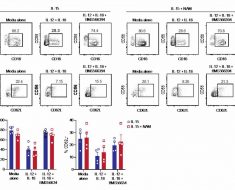A new study found the majority of late preterm infants (LPTs) suffer from morbidities resulting in hospital stay. Although factors that result in LPT births do contribute to morbidity, physiological immaturity plays an important role in producing poorer outcomes. The research will be presented during the Pediatric Academic Societies (PAS) 2018 Meeting in Toronto.
LPTs constitute 70 percent of the preterm population. Common neonatal morbidities are higher in this group compared to term infants. Although this increased risk is attributed to physiological immaturity, recent studies indicate that immaturity itself may not be the sole cause of morbidity as all premature infants experience this risk, but suffer different outcomes. Some studies demonstrate that the risk of morbidities is determined by the causes of preterm delivery with immaturity acting as modulator. The relative contribution of these factors is unclear. The objective of this study was to assess the role of indications of delivery in LPT in determination of common neonatal morbidities that result in hospital stay.
The study was conducted as a retrospective cohort study of LPTs born in a single tertiary care centre between April 2014 and February 2016. Researchers categorized indications of birth as threatened preterm labor (TPTL), preterm premature rupture of membrane (PPROM) and medically indicated deliveries, which included maternal and fetal pathologies. Risk of hypoglycemia, hyperbilirubinemia, use of CPAP, and apnea of prematurity in LPT were estimated by calculating unadjusted and adjusted for gestational age risk ratios using multiple regression analysis with PPROM as a reference category.
PPROM was responsible for 38.4 percent of deliveries, TPTL in 22.8 percent, and 39.1 percent were delivered due to various obstetric and fetal indications with pre-eclampsia and intrauterine growth restriction being the most common reason for medically indicated preterm deliveries. All morbidities were significant across gestational age, with increased risk with decreased gestational age, except hypoglycemia where the incident was highest at 36 weeks (66.7 percent), versus 28.5 percent at 35 weeks, and 22.7 percent at 34 weeks (p value=0.039).
Source: Read Full Article





